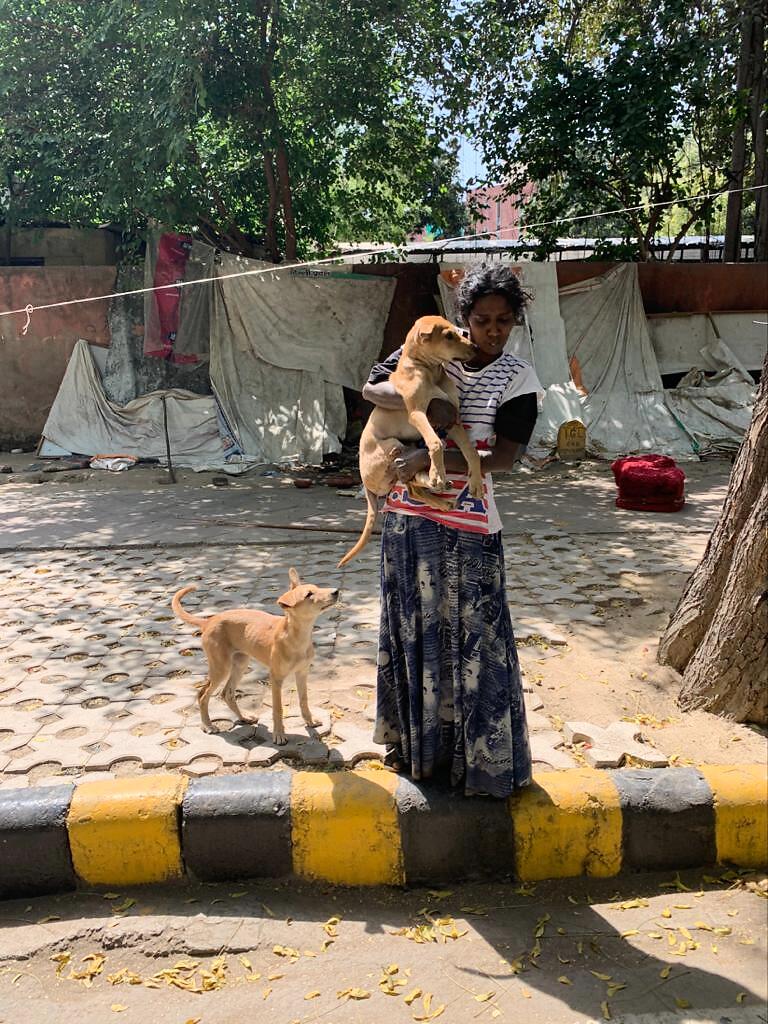
views
New Delhi: Nobody's around to listen to them anymore, but people demanding justice at Delhi's Jantar Mantar are still around. Living under their protest banners, walking up and down Sansad Marg all day and running away from the occasional speeding car. And praying to their gods for some food.
Had they known that a national lockdown was going to be announced they would've left, they say. Now they're stuck in one place and don't know for how long.
Among them is a woman from Andhra Pradesh who began her protest after her daughter was raped, a man who claims to have been fasting for global peace right here for the past 23 years, a woman from Kerala whose sister was murdered.
There is also Sikandar Khan and his 15-year-old nephew who practically grew up on this street. Khan says his sister came here in 2005 after she was thrown out of her house by her husband who was an MLA back then.
"The MLA's goons threatened to kill us after my sister went public demanding justice. They beat me up and would have killed the boy as well. To escape the threats we took some money and came to Delhi in 2005. Right here my sister sat since then with this boy who was five years old then, till she died of brain hemorrhage in 2016," Khan says.
Over time, this street became home to the boy. His most vivid memories are of participating in 'Anna ka dharna' and in the protest against 'Damini rape case'. In the meanwhile, Khan got a job as a construction labourer in Gurgaon and from his wages he was able to put the child in a government school and get food on the table.
But after the lockdown, his contractor — who owed him Rs 30,000 — went untraceable. "Jo bacha tha kha liya. Ab kuch nahi hai khane ke liye. (Whatever money I had has already been spent on food. Now there's nothing to eat.)"
Sansad Marg is also home to people who came here only because they had nowhere else to go. Dinesh Giri, who suffers from leprosy, lives here near a public toilet with his wife Maya Devi. The couple had come to Delhi to seek treatment for Maya, who was diagnosed with tuberculosis, at a government hospital.
"Ilaaj to theek ho gaya lekin hum idhar fas gaye, bauji. Hum dono hi zyaada chal fir nahi sakte. Khaane to taras rahe hain (The treatment went well but we got stuck here. We're not in a condition to move around much. We're pining for a morsel)," he says.

Down the road towards Parliament is the small tenement of Pooja who worries about the street dogs that she has become quite attached to over the years. "There is no one to look after my dogs. I give to them from whatever little food I have. But we're both running out of food. Two days ago, a dog of mine died. There was no one to turn to," she says. She has been protesting here after her sister was kidnapped and murdered.
There is also a man who claims to have been on a hunger strike for the past 23 years. He introduces himself as Dr Ramaindra Kumar. "I used to be the assistant professor at Jawaharlal Nehru University’s Hindi department," he says.
Kumar says food is not a big issue for him as he's anyway on several hunger-strikes — against the global order for three hours in the morning, for global peace for another three hours in the afternoon, for 'Akhand Bharat' at nights. Lately, he has also added the CAA and NRC to the list of issues he stands against.
But he adds, "A person needs at least two meals a day to survive, no? I have had only one meal since yesterday. Things are getting tough." But why is he still skipping meals when there's no one to witness and react to his protests? "It's a matter of principles," he responds.




















Comments
0 comment